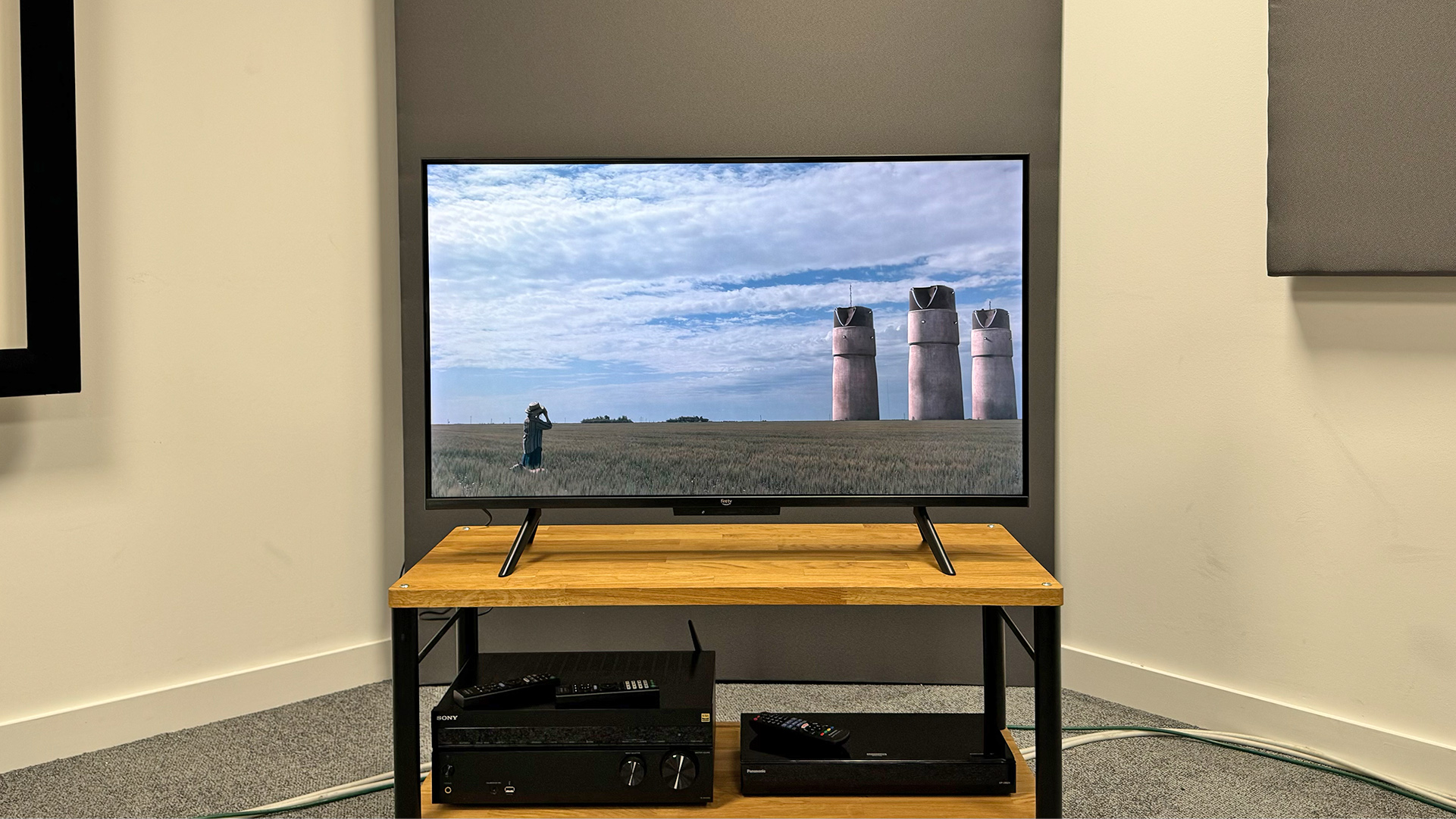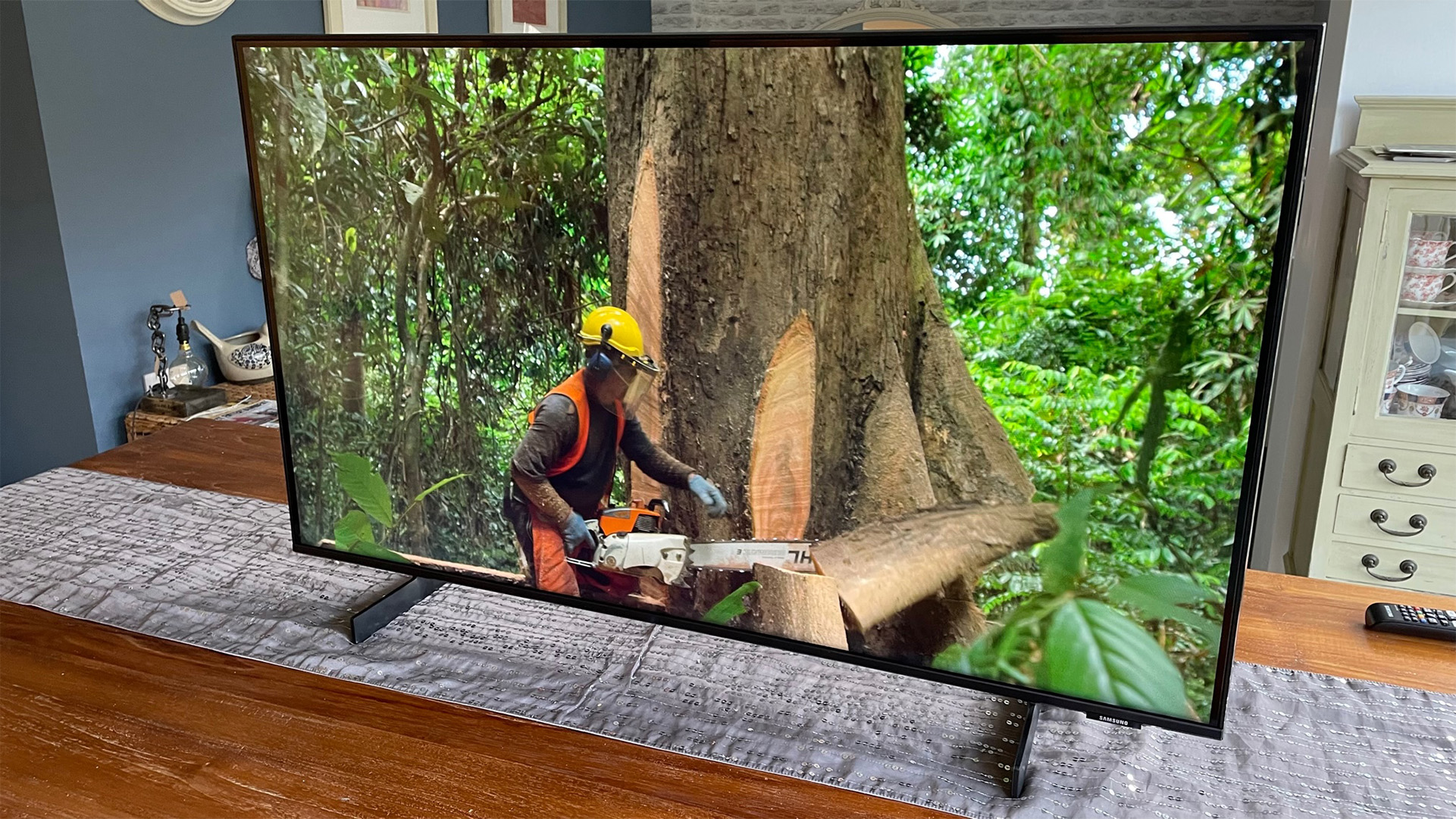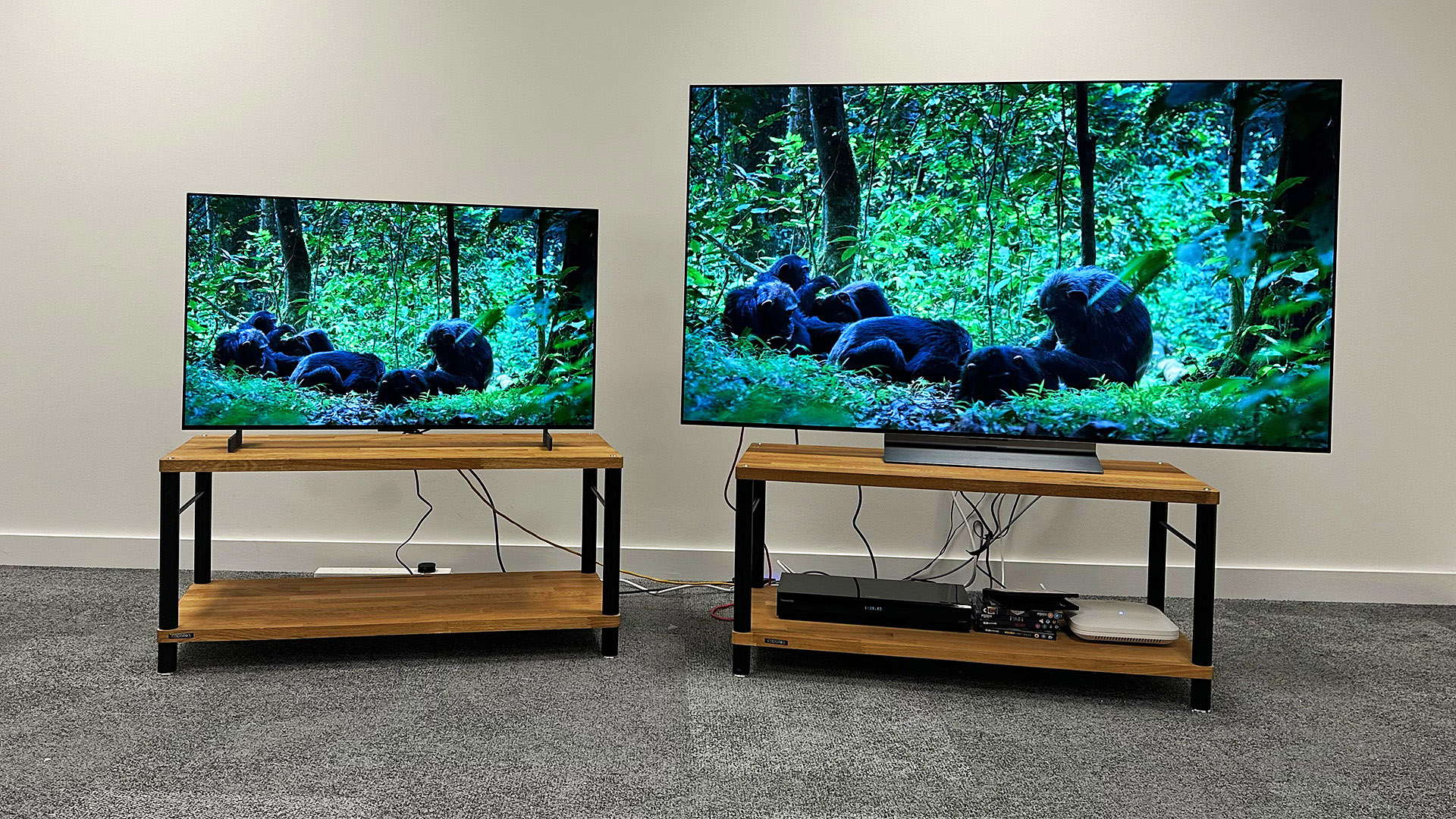Warning: just because a TV is great at one size doesn't mean it will be at another
The model number might be the same, but the performance could be very different

A lot of people (and even some TV-reviewing publications) believe, or at least assume, that TVs scale up and down in size without there being a change in quality. For example, you might read a review of a great 55-inch TV and figure that the 43-inch version must be just as good. Unfortunately, this simply isn’t the case.
The Amazon Fire TV Omni QLED is just the latest evidence of this. We initially reviewed it as a 65-inch model and were impressed by its value for money but found a couple of flaws that held it back from a five-star rating. Those flaws were a little less pronounced on the 50-inch version we tested next, so we felt that one was worthy of all five stars.
But then it was the turn of the 43-inch model, and things took a turn for the worse. For this version, Amazon removed a key feature of the larger models – local dimming – and this has an overwhelmingly negative effect, particularly as the company doesn’t appear to have compensated appropriately for this downgrade.
In fairness to Amazon, it does note this difference relatively clearly on the product page. You probably need to know a thing or two about TVs in order to grasp the terms involved (our local dimming explainer should come in handy there), but it’s not as if Amazon is trying to pull the wool over anyone’s eyes.
Of course, there's something inherently confusing about selling two TVs under the same name despite there being fundamental differences in the specs, but this is a really common occurrence in the TV industry and the Omni QLED is far from the most egregious example.
Backlit TVs are the biggest offenders

Backlit TVs, whether sold as 'LED', 'QNED', 'QLED' or simply 'LCD', are particularly susceptible to size variability. For starters, it’s common for some sizes of a TV to feature a VA panel while others use IPS, which fundamentally impacts picture quality. Most brands these days also buy panels for their TVs from other manufacturers, and it’s not uncommon for them to source panels in one size from one manufacturer and in other sizes from another. In other words, you could buy a 43-inch TV with a VA panel made by one supplier, and a 55-inch TV with the same name that features an IPS panel manufactured by a completely different company.
Then there are, of course, those specification differences. Even if all of the different sizes of a TV do feature local dimming, for example, it’s unlikely they will all have the same number of dimming zones. And if they did, the larger models would be less effective than the smaller ones as each dimming zone would be responsible for handling the light for a larger portion of the screen.
The latest hi-fi, home cinema and tech news, reviews, buying advice and deals, direct to your inbox.
Even if a TV does appear on paper to be simply a larger or smaller version of another TV, there is still no guarantee of performance consistency. Take the Samsung CU8000, for example – the 55-inch version is a solid, four-star set, while the 43-inch model has, to quote our review, ‘the messiest backlight system we’ve seen in ages’.
There are things to look out for with OLEDs, too

OLED TVs are much more consistent across different sizes for several reasons, some of which might be quite obvious. The first is that each pixel is represented by a self-emissive OLED, so there are no dimming zones to contend with. The second is that in almost all cases, an OLED TV will feature across all sizes either panels from LG Display or Samsung Display.
However, there are exceptions here too. The LG G3 OLED, for example, features MLA technology in most sizes, but not the 83-inch and 97-inch versions, which consequently go less bright than their smaller siblings. Samsung also got into hot water last year by launching an 83-inch version of its S90C model that went without the QD-OLED technology of its smaller siblings – it used a 'standard' WOLED panel instead. It’s currently in even hotter water on account of reports that it is this year going to launch QD-OLED and WOLED versions of the same TV at the same size, but that’s another story altogether.
Even when things are going broadly as they should in OLED TV land, there are differences to be aware of, most notably that 42-inch and 48-inch versions of an OLED TV aren’t able to hit the same peak brightness as the versions that are 55 inches and larger.
Still, our current approach with OLEDs, which is the result of years of experience in testing various models at a range of sizes, is to consider 42-inch and 48-inch models independently, and 55-inch, 65-inch and 77-inch models together. That stance is of course under constant review, though.
It is also worth saying that sound quality also changes with size, even when comparing a 55-inch version of a model with the 65-inch variant. Generally, you can expect a slightly weightier delivery from a larger TV, as there’s usually a little more casework for the drivers to breathe. That isn’t always the case, as some models have the same speaker casework regardless of their screen size, but even then you can find that differences emerge from, among other things, the need for the drivers to push sound around a wider panel.
Broadly speaking, though, we’re talking fairly fine margins where sound is concerned, in that a TV that sounds rubbish at 55 inches is highly unlikely to sound good at 65 inches. Seeing as most TVs sound pretty poor anyway, we don’t feel this aspect is worth getting too hung up on. Of course, the audio quality of a 42-inch TV will be entirely different from that of a 65-inch model with the same name, but that’s another reason for us reviewing those sizes separately.
In summary, you really must not assume that a TV that looks good at one size will look just as good at another, particularly if it’s a backlit model, and particularly if there’s a large difference in size. We always flag in our reviews the specific size that was tested, and while consistency tends to be typically good from 55 inches up to 75/77 inches, anything beyond that is a bit of a shot in the dark.
MORE:
Take the guesswork out and check out the best 43-inch TVs, the best 50-inch TVs, and the best 55-inch TVs
Here's everything you need to know about IPS and VA panel technology
Tom Parsons has been writing about TV, AV and hi-fi products (not to mention plenty of other 'gadgets' and even cars) for over 15 years. He began his career as What Hi-Fi?'s Staff Writer and is now the TV and AV Editor. In between, he worked as Reviews Editor and then Deputy Editor at Stuff, and over the years has had his work featured in publications such as T3, The Telegraph and Louder. He's also appeared on BBC News, BBC World Service, BBC Radio 4 and Sky Swipe. In his spare time Tom is a runner and gamer.

